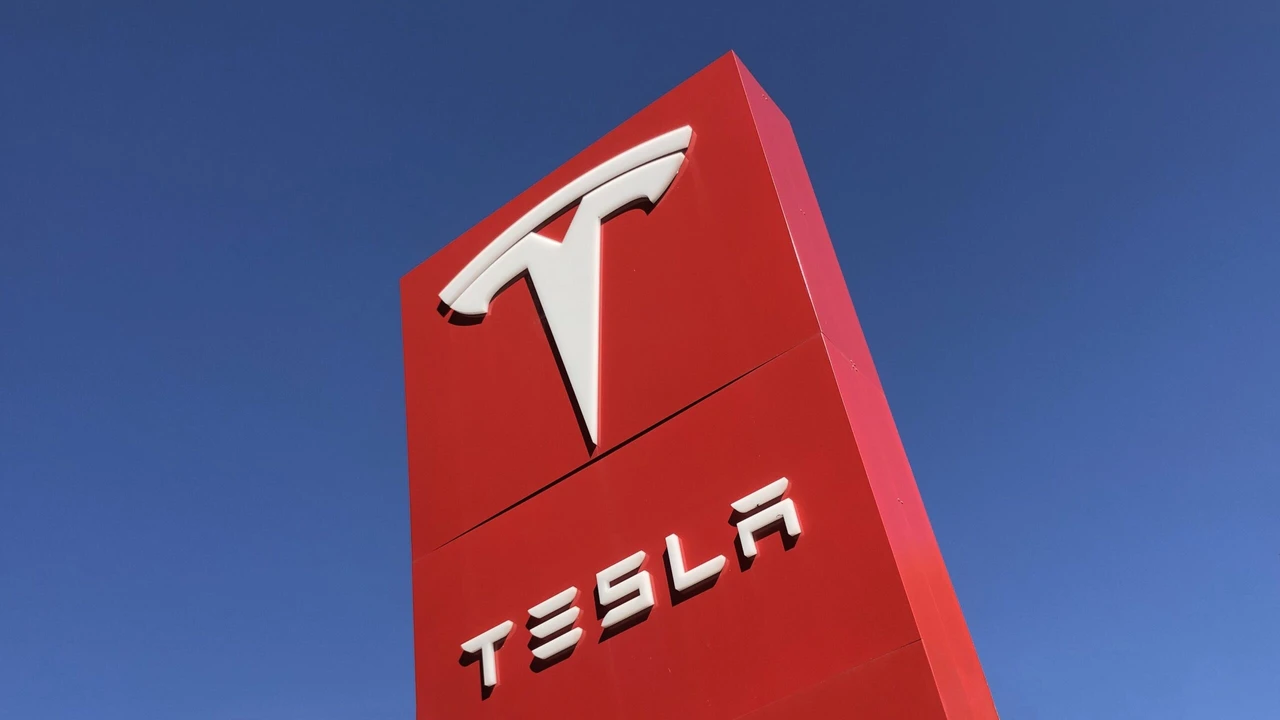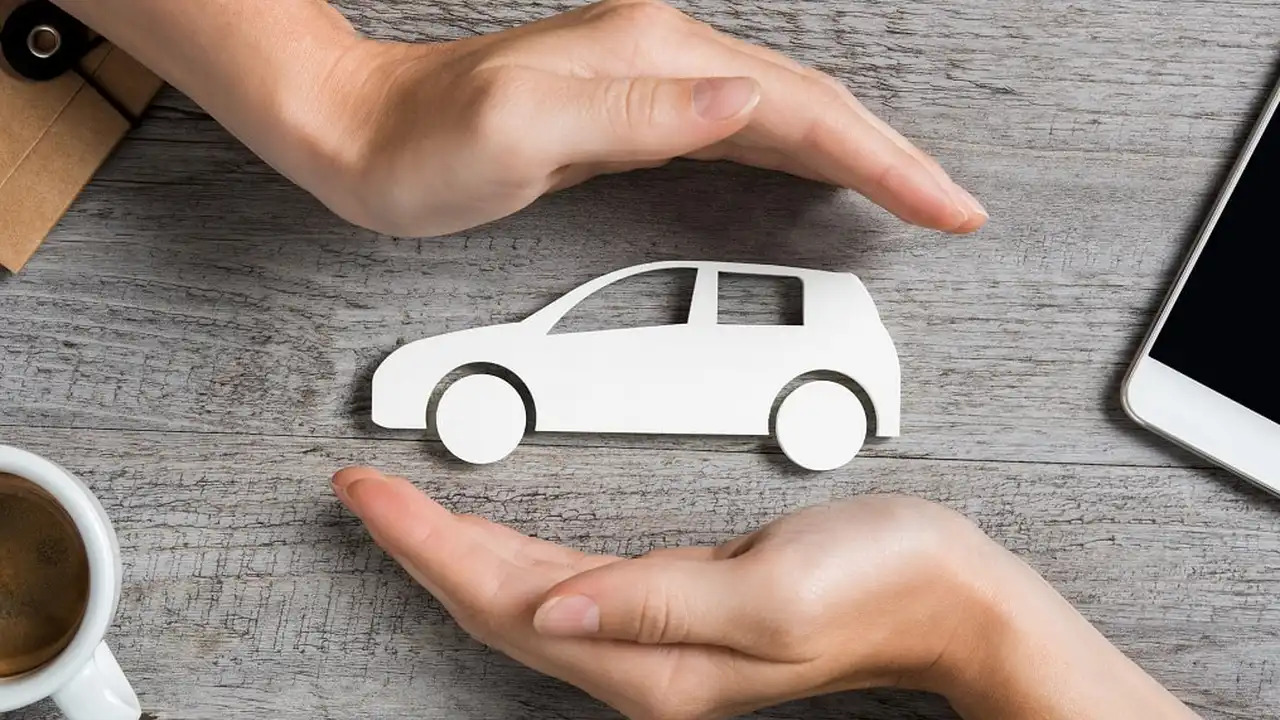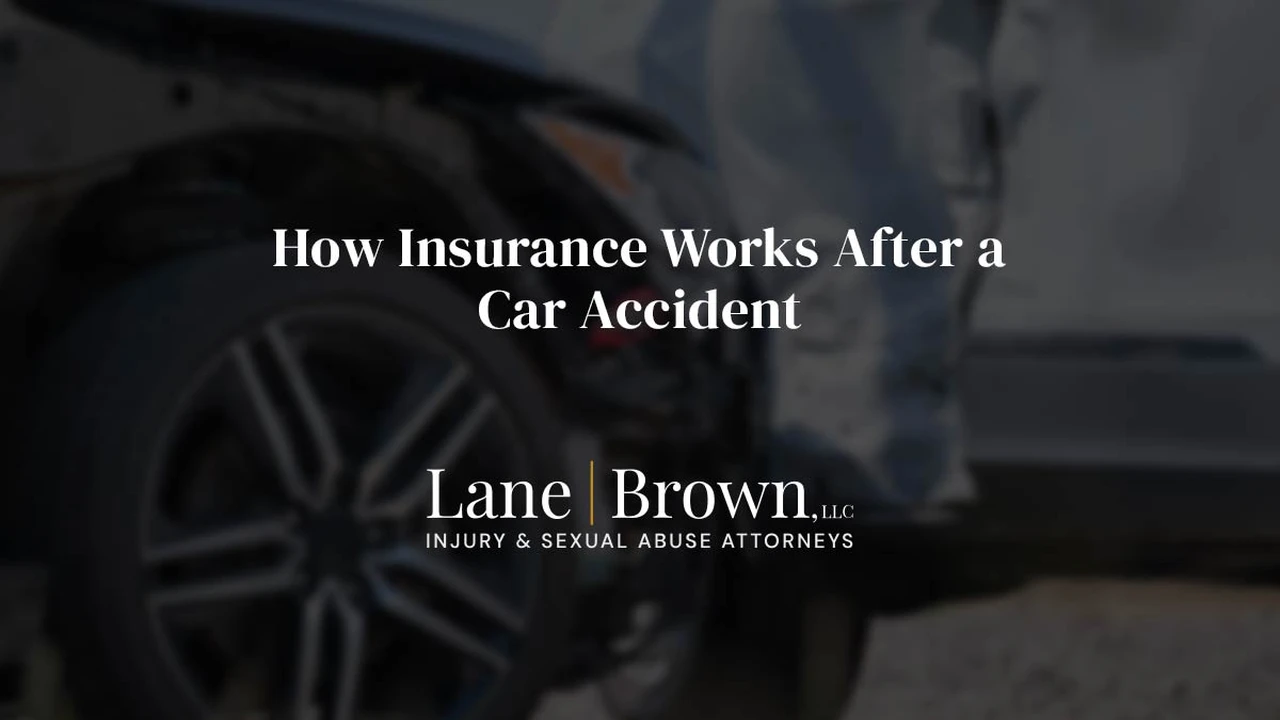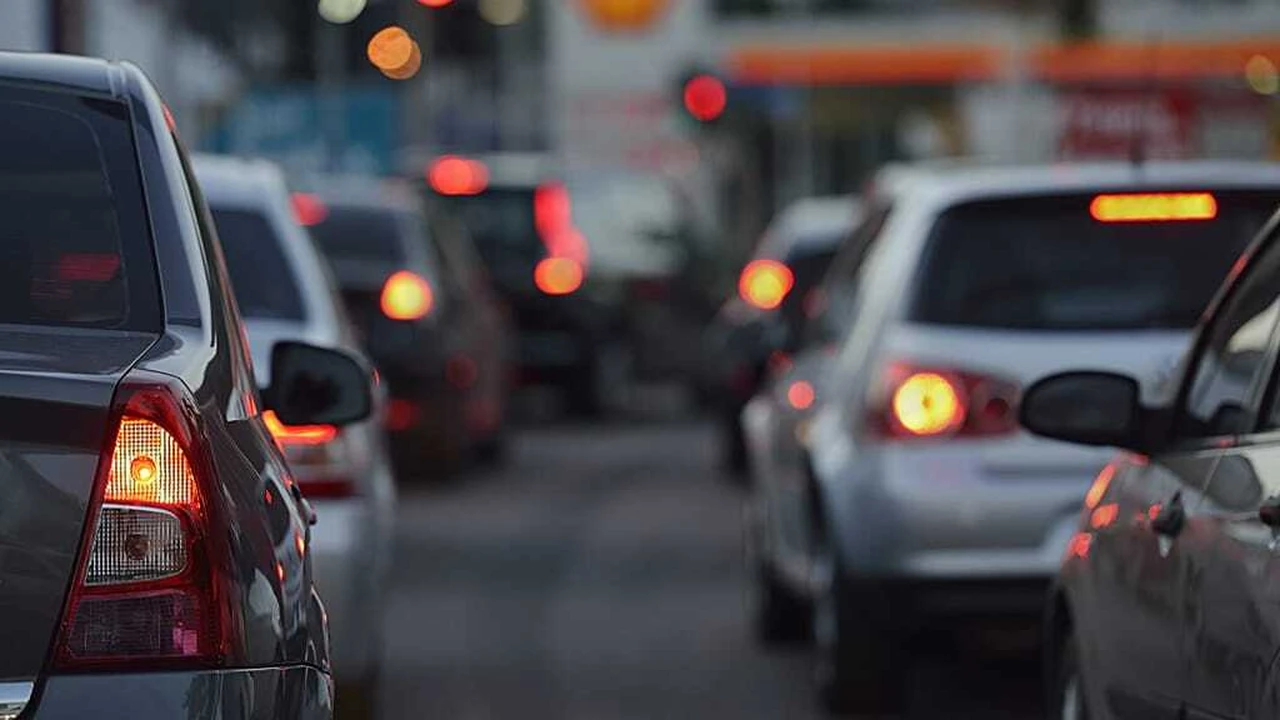Understanding Car Insurance Exclusions: What's Not Covered

Decoding Car Insurance Exclusions Common Scenarios and Policy Limitations
Alright, let's dive into the nitty-gritty of car insurance exclusions. We all hope we never *need* our car insurance, but when we do, it's crucial to know exactly what's covered and, more importantly, what's *not*. Think of exclusions as the fine print, the clauses that define the boundaries of your policy's protection. Ignoring them is like driving blindfolded – you might get lucky, but the odds are definitely not in your favor. This isn't about scaring you; it's about empowering you to make informed decisions. We'll explore common exclusions, why they exist, and how to navigate them to ensure you're adequately covered.
First things first, what *are* exclusions? Simply put, they are specific events, situations, or types of damage that your insurance policy won't pay for. These are outlined in your policy documents, often buried in legal jargon, which is why many people overlook them. Understanding these exclusions is vital because assuming everything is covered is a recipe for financial disaster. Imagine thinking you're covered for a specific incident, only to find out later that your claim is denied due to an exclusion. That's a situation we want to help you avoid!
One of the most common exclusions revolves around *intentional acts*. If you deliberately damage your car or cause an accident, your insurance company isn't going to foot the bill. This seems obvious, right? But it's worth stating explicitly. Insurance is designed to protect you from accidents and unforeseen events, not intentional misconduct. Think of it like this: you can't intentionally crash your car into a wall and expect your insurance to pay for the repairs. That's fraud, plain and simple.
Another frequent exclusion involves *illegal activities*. If you're driving under the influence of alcohol or drugs, or if you're using your car to commit a crime, any resulting damage or injuries will likely be excluded from coverage. This is a pretty standard clause across most insurance policies. Driving legally and responsibly is not only the right thing to do, but it also protects your insurance coverage.
Wear and tear is another big one. Car insurance isn't a maintenance plan. It's not designed to cover the cost of routine repairs or the gradual deterioration of your vehicle. So, if your engine blows due to lack of oil changes, or your tires wear out because you haven't rotated them, your insurance won't cover it. This highlights the importance of regular car maintenance. Taking care of your car will not only extend its lifespan but also prevent issues that insurance won't cover.
Furthermore, many policies exclude damage caused by *racing or competitive events*. If you decide to take your car to a racetrack and crash it, don't expect your insurance company to pay for the repairs. These activities are considered high-risk, and standard auto insurance policies typically don't cover them. If you're a racing enthusiast, you'll need to look into specialized track day insurance.
Finally, let's talk about *uninsured or underinsured motorists*. While your policy likely *includes* coverage for accidents caused by uninsured or underinsured drivers, there might be limitations. For example, your policy might only cover your medical expenses and not the damage to your car if the uninsured driver is at fault. Or, the coverage might be capped at a certain amount. It's crucial to understand the limits of your uninsured/underinsured motorist coverage to protect yourself financially in case of an accident with someone who doesn't have adequate insurance.
Specific Car Insurance Exclusions Explained Navigating Policy Fine Print
Now, let's delve into some more specific and often overlooked exclusions. These are the ones that can really catch you off guard if you're not paying attention.
Using Your Car for Commercial Purposes: Many personal auto insurance policies exclude coverage if you're using your car for commercial purposes, such as delivering goods for a fee (e.g., food delivery, ridesharing). If you're driving for Uber, Lyft, DoorDash, or any similar service, you need to have specific rideshare insurance or commercial auto insurance. Using your personal policy for commercial activities could result in a denied claim and even cancellation of your policy.
Damage from War or Terrorism: This might seem like a far-fetched exclusion, but it's a standard clause in most auto insurance policies. Damage caused by acts of war or terrorism is typically not covered. This is because such events are considered catastrophic and beyond the scope of standard insurance coverage.
Earthquakes and Other Natural Disasters: While comprehensive coverage often covers damage from natural disasters like hail or floods, it may *exclude* damage from earthquakes. If you live in an area prone to earthquakes, you might need to purchase separate earthquake insurance to protect your vehicle.
Customizations and Aftermarket Parts: Standard auto insurance policies typically only cover the value of your car in its original condition. If you've added expensive customizations or aftermarket parts, such as a custom sound system, performance upgrades, or specialized wheels, they might not be fully covered in the event of an accident. You'll need to specifically declare these modifications and potentially purchase additional coverage to ensure they are protected.
Driving Without a Valid License: This one should be obvious, but it's worth mentioning. If you're driving without a valid driver's license, your insurance policy is unlikely to cover any resulting damage or injuries. This includes driving with a suspended or revoked license. Always ensure your license is valid and up-to-date before getting behind the wheel.
Using Your Car for Illegal Racing: As mentioned earlier, racing is generally excluded. However, it's worth reiterating with specific detail. Participating in illegal street races or any unauthorized racing events will void your coverage. Insurance companies view these activities as incredibly high-risk and will not cover any damages incurred.
Mechanical Breakdown: As mentioned, Car insurance primarily covers accidents, collisions, and damage from external events, not internal mechanical failures. If your engine fails due to a manufacturing defect or lack of maintenance, it's typically not covered under your auto insurance policy. A separate mechanical breakdown insurance policy might be necessary to cover these types of failures.
Understanding Policy Limits and Deductibles How They Impact Coverage
Beyond exclusions, understanding your policy limits and deductibles is crucial for comprehending the full scope of your car insurance coverage. These factors directly influence how much you'll pay out-of-pocket in the event of a claim.
Policy Limits: Policy limits are the maximum amount your insurance company will pay for a covered claim. These limits are typically expressed as two numbers, such as 100/300/100. The first number ($100,000 in this example) represents the maximum amount your insurance company will pay for bodily injury liability per person. The second number ($300,000) represents the maximum amount they will pay for bodily injury liability per accident. The third number ($100,000) represents the maximum amount they will pay for property damage liability per accident. It's essential to choose policy limits that adequately protect your assets. If you cause an accident and the damages exceed your policy limits, you'll be personally responsible for paying the difference.
Deductibles: A deductible is the amount you pay out-of-pocket before your insurance coverage kicks in. For example, if you have a $500 deductible and your car is damaged in an accident, you'll pay the first $500 of the repair costs, and your insurance company will pay the remaining amount (up to your policy limits). Choosing a higher deductible will typically result in a lower premium, but it also means you'll have to pay more out-of-pocket in the event of a claim. Choosing a lower deductible will result in a higher premium but will reduce your out-of-pocket expenses. The best deductible for you depends on your risk tolerance and financial situation.
How Limits and Deductibles Interact: It's vital to consider how your policy limits and deductibles work together. A low deductible might seem appealing, but if your policy limits are too low, you might still be exposed to significant financial risk if you cause a major accident. Conversely, high policy limits are beneficial, but if you choose a very high deductible, you might struggle to afford the out-of-pocket costs if you need to file a claim. Balancing these two factors is key to finding the right level of coverage for your needs.
Product Recommendations Car Insurance Options to Consider
Okay, let's talk about some specific car insurance products that can help you fill in the gaps left by common exclusions and ensure you have comprehensive coverage. Remember, this isn't a one-size-fits-all situation. The best option for you depends on your individual circumstances, driving habits, and risk tolerance.
Gap Insurance: If you're financing or leasing a car, gap insurance is a must-have. It covers the "gap" between the amount you owe on your loan or lease and the actual cash value of your car. If your car is totaled in an accident, your standard auto insurance will only pay the actual cash value, which might be less than what you still owe. Gap insurance covers the difference, preventing you from being stuck paying off a car you can no longer drive. Many dealerships offer gap insurance when you purchase a car, but you can also often find it through your insurance company for a lower price.
Rideshare Insurance: If you drive for Uber, Lyft, or any other ridesharing service, you need rideshare insurance. As mentioned earlier, your personal auto insurance policy likely excludes coverage while you're driving for commercial purposes. Rideshare insurance bridges the gap between your personal policy and the coverage provided by the ridesharing company. It typically covers you from the moment you turn on the app and are waiting for a ride request until you drop off the passenger.
Umbrella Insurance: Umbrella insurance provides an extra layer of liability protection above and beyond your standard auto insurance policy limits. If you're involved in a serious accident and the damages exceed your auto insurance limits, your umbrella policy will kick in to cover the remaining costs. Umbrella insurance is particularly valuable if you have significant assets to protect, such as a home, savings, or investments. It can shield you from lawsuits and prevent you from having to liquidate your assets to pay for damages.
Mechanical Breakdown Insurance (MBI): As we discussed, standard auto insurance doesn't cover mechanical breakdowns. MBI is a separate policy that covers the cost of repairing or replacing mechanical parts that fail due to wear and tear or defects. MBI is similar to an extended warranty but is often more comprehensive and can be purchased at any time, not just when you buy the car. It can be a valuable investment if you're concerned about the cost of unexpected repairs.
Supplemental Medical Payments Coverage (MedPay): MedPay covers medical expenses for you and your passengers, regardless of who is at fault in an accident. It can help pay for deductibles, co-pays, and other out-of-pocket medical costs. Even if you have health insurance, MedPay can provide additional coverage and peace of mind.
Comparing Car Insurance Products Features Benefits and Pricing
Let's break down a comparison of these recommended products, focusing on their features, benefits, and typical pricing. Keep in mind that pricing can vary significantly based on your location, driving record, vehicle, and other factors. It's always best to get quotes from multiple insurers to find the best deal.
Gap Insurance Comparison:
- Features: Covers the difference between the loan/lease balance and the car's actual cash value.
- Benefits: Prevents you from owing money on a totaled car.
- Pricing: Typically ranges from $200-$500 for the life of the loan/lease. Can be purchased from the dealership or your insurance company.
Rideshare Insurance Comparison:
- Features: Covers the gaps in coverage between your personal policy and the ridesharing company's policy.
- Benefits: Protects you while you're driving for commercial purposes.
- Pricing: Varies widely depending on the insurer and your driving record. Can range from $20-$200 per month in addition to your personal policy.
Umbrella Insurance Comparison:
- Features: Provides an extra layer of liability protection.
- Benefits: Protects your assets from lawsuits.
- Pricing: Typically ranges from $150-$300 per year for $1 million in coverage.
Mechanical Breakdown Insurance (MBI) Comparison:
- Features: Covers the cost of repairing or replacing mechanical parts.
- Benefits: Protects you from unexpected repair bills.
- Pricing: Varies depending on the insurer, vehicle, and coverage level. Can range from $50-$150 per month.
Supplemental Medical Payments Coverage (MedPay) Comparison:
- Features: Covers medical expenses for you and your passengers, regardless of fault.
- Benefits: Helps pay for deductibles, co-pays, and other out-of-pocket medical costs.
- Pricing: Relatively inexpensive, typically adding only a few dollars per month to your premium.
Real World Car Insurance Scenarios and Exclusion Examples
Let's look at some real-world scenarios to illustrate how car insurance exclusions can play out in practice. These examples will help you understand how different exclusions can impact your coverage and what you can do to protect yourself.
Scenario 1: The Delivery Driver: John works as a delivery driver for a local pizza restaurant. He uses his personal car for deliveries. One day, while on a delivery, he gets into an accident. His insurance company denies his claim because his personal auto insurance policy excludes coverage for commercial use. John is now responsible for paying for the damages to his car and the other driver's car out of pocket. Lesson: If you use your car for commercial purposes, you need commercial auto insurance or rideshare insurance.
Scenario 2: The Racing Enthusiast: Sarah enjoys taking her car to local racetracks for amateur racing events. During one event, she loses control and crashes into a barrier. Her insurance company denies her claim because her policy excludes coverage for racing or competitive events. Sarah is responsible for covering the cost of repairing her car, which is substantial due to the extensive damage. Lesson: If you participate in racing or competitive events, you need specialized track day insurance.
Scenario 3: The Flood Victim: Mark lives in an area prone to flooding. During a heavy rainstorm, his car is flooded and suffers significant water damage. His comprehensive coverage covers the damage, *but* he had some aftermarket audio equipment installed. His insurance only covers the cost to replace the factory installed audio. Lesson: Ensure your policy covers aftermarket parts, or purchase additional coverage to protect them.
Scenario 4: The Uninsured Driver: Emily is hit by an uninsured driver. She has uninsured motorist coverage, but the other driver caused serious injuries and the repair to her new car is extensive. The uninsured motorist coverage has policy limits that do not cover all the expenses. Lesson: Make sure you have high enough Uninsured/Underinsured Motorist Coverage. It is often one of the most overlooked and undervalued coverages.
Scenario 5: The Negligent Owner: David never changes the oil in his car. One day, his engine seizes up and he needs a new one. His insurance company denies his claim because the engine failure was due to lack of maintenance, which is excluded under his policy. David is responsible for paying for the engine replacement out of pocket. Lesson: Regular car maintenance is crucial not only for extending the life of your car but also for ensuring your insurance coverage remains valid.
Tips for Minimizing Exclusions and Maximizing Car Insurance Coverage
So, how can you proactively minimize the impact of exclusions and maximize your car insurance coverage? Here are some practical tips:
- Read Your Policy Carefully: This might seem obvious, but it's the most important step. Take the time to read your policy documents thoroughly and understand the exclusions. Don't hesitate to ask your insurance agent to explain anything you don't understand.
- Be Honest with Your Insurer: When applying for car insurance, be honest about your driving habits, vehicle modifications, and any other relevant information. Providing false or misleading information could result in a denied claim or even cancellation of your policy.
- Maintain Your Vehicle: Regular car maintenance can prevent mechanical breakdowns and other issues that are excluded from coverage. Keep your car in good working order to minimize the risk of unexpected problems.
- Drive Safely and Legally: Avoid driving under the influence of alcohol or drugs, speeding, or engaging in other illegal activities. These behaviors can void your insurance coverage and put you at risk of accidents.
- Consider Additional Coverage: Evaluate your individual needs and consider purchasing additional coverage, such as gap insurance, rideshare insurance, or umbrella insurance, to fill in the gaps left by standard exclusions.
- Shop Around for the Best Rates: Car insurance rates can vary significantly between insurers. Get quotes from multiple companies to find the best coverage at the most affordable price.
- Review Your Policy Annually: Your needs and circumstances can change over time. Review your car insurance policy annually to ensure it still meets your needs and that your coverage is adequate.
The Future of Car Insurance Emerging Trends and Exclusion Considerations
The car insurance landscape is constantly evolving, with new technologies and trends emerging all the time. These changes are also impacting the types of exclusions that are becoming more common. Let's take a look at some of these emerging trends and how they might affect your coverage.
Autonomous Vehicles: As self-driving cars become more prevalent, the question of liability in the event of an accident becomes more complex. Who is responsible when a self-driving car causes an accident – the manufacturer, the software developer, or the owner? Insurance companies are still grappling with these issues, and new exclusions related to autonomous driving technology are likely to emerge. You'll need to carefully review your policy to understand how it covers accidents involving self-driving cars.
Subscription Services: Car subscription services are becoming increasingly popular, offering consumers the flexibility to switch between different vehicles on a monthly basis. However, the insurance implications of these services are still unclear. You'll need to understand who is responsible for insuring the vehicle and what types of coverage are included in the subscription fee. Some subscription services might include insurance, while others might require you to provide your own coverage.
Data Collection and Usage: Insurance companies are increasingly using data collected from telematics devices and smartphone apps to assess driving behavior and set premiums. This data can include information about your speed, acceleration, braking habits, and location. While this data can potentially lead to lower premiums for safe drivers, it can also result in higher premiums or even denied claims if you exhibit risky driving behavior. You'll need to be aware of how your insurance company is collecting and using your data and what the potential consequences are.
Cybersecurity Risks: Modern cars are increasingly connected to the internet, making them vulnerable to cybersecurity attacks. Hackers could potentially gain control of a vehicle's systems and cause an accident. Insurance companies are starting to address these cybersecurity risks, and new exclusions related to cyberattacks might emerge. You'll need to understand how your policy covers accidents caused by cyberattacks and what steps you can take to protect your vehicle from these threats.
By staying informed about these emerging trends and understanding how they might affect your car insurance coverage, you can take steps to protect yourself and ensure you have adequate protection in the event of an accident.
:max_bytes(150000):strip_icc()/277019-baked-pork-chops-with-cream-of-mushroom-soup-DDMFS-beauty-4x3-BG-7505-5762b731cf30447d9cbbbbbf387beafa.jpg)






